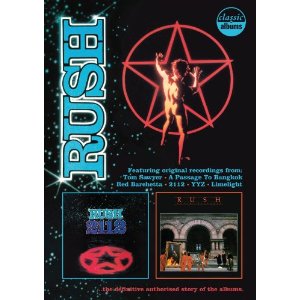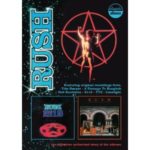
Eagle Vision
Following the release of the Rush documentary, Beyond the Lighted Stage, this Classic Albums edition, which focuses on these two pivotal Rush albums, ends up acting as an addendum to that release rather than a major peak behind the curtain. Like Beyond it goes through the trio’s history, just much more briefly here. The set up and payoff leads to the recording of 2112 and the members’ us-against-them mentality, which ignores record company demands for a more commercial, concise set of tunes. As Alex Lifeson put it, “It’s the first record we made where we sounded like Rush.” Later, portions of the Moving Pictures segment sounds familiar, particularly when the discussion on “Limelight” finds both docs using the same interview footage of Neil Peart discussing how his view of fandom doesn’t correlate with the interpretation of the group’s followers.
But for avid Rush fans the delight is in the details. On 2112 the complexity of the music and the storyline of the individual taking on the system through the power of rock ‘n’ roll is something that bassist Geddy Lee explains, “resonates with people.” And it’s definitely accomplished enough to bring together a disparate grouping of interview subjects including Taylor Hawkins of Foo Fighters, Ed Robertson of Barenaked Ladies, DJ Jim Ladd, writer David Fricke and Dr. John Ridpath, retired Associate Professor of Intellectual History at York University who serves on the board of directors at the Ayn Rand Institute.
Unlike previous Classic Album programs, Lee, Lifeson and Peart play sections of the songs including the “Overture” from 2112 rather than hang around a studio console and take apart a song, track-by-track, in order to highlight a harmony part, solo or rhythm section. There is only a brief glimpse of the members doing this — the synth intro to “Tom Sawyer.” The approach seems odd initially but makes sense as it moves forward since the trio is all about the playing as one rather than slavishly multi-tracking a song which is more conducive to highlighting an instrumental break (i.e. the Who, U2, Tom Petty & the Heartbreakers).
Because of the close association between this doc and the previous one, what should then be of interest to Rush completists are the portions that do add depth to the band’s story, particularly the frank talk about Lee’s voice and bonus material that deals with influences and how they have driven the members throughout the years in ways that are noticeable and subtle. It may not be a lot but there’s enough here to chew on.



No Comments comments associated with this post